Shodo, or Japanese calligraphy, has been practiced and enjoyed by many to this day, not only to practice writing characters but as a form of meditation. But did you know that there’s 3 different types of calligraphy? Learn what you need to know to get started with shodo.
First posted: 2022/2/22
Updated: 2023/8/31
Table of Contents
- Shodo, History of Japanese Calligraphy
- Modern Day Shodo Masters and Artists
- The Fundamentals of Shodo
- What You Need for Shodo
- Try Japanese Calligraphy
- Summary
Shodo, History of Japanese Calligraphy
The origins of shodo can be traced way back in history to ancient Japan, though its exact origins are unknown. Before Japan had an official writing system, they borrowed Chinese characters, but with the eventual implementation of kana, Japan’s original writing system, they were able to set apart not only their writing system from the Chinese but also their calligraphy as well. It was first often used by Buddhist monks to write religious scripts so some of the most famous Japanese calligraphers in history are monks. It is still associated with meditation and concentration today, as Japanese people observe things like 書き初め (kakizome), when they write their goal for the new year in calligraphy on January 2nd. It’s also taught as part of the curriculum in public schools (it is often referred to as 習字 shuji in schools), and there are contests held every year, for both children and adults, and even some around the world!
Writer's Pick
Modern Day Shodo Masters and Artists
Here are just two of the many calligraphy masters who practice shodo in Japan and around the world.
Fujii Hekiho

Fujii Hekiho started calligraphy at the very young age of 4, attending calligraphy classes offered in his neighborhood. He obtained his certification as “Shihan” or master of calligraphy at 23 years old. And in 2018, he officially began his career as a calligrapher and calligraphy designer.
In addition to winning prestigious awards, he has designed original nameplates, logos and signs for various businesses and events and continues to do so.
One of his biggest achievements is writing a wooden plaque (shown below) for Minehonsha of Oyama Shrine on Mount Tate (Tateyama) in Toyama Prefecture, and then physically carrying it 30 kilometers as a pilgrimage to the summit (3000 meters above sea level) to personally dedicate the plaque to the shrine. Mount Tate is considered one of the three spiritual mountains in Japan.
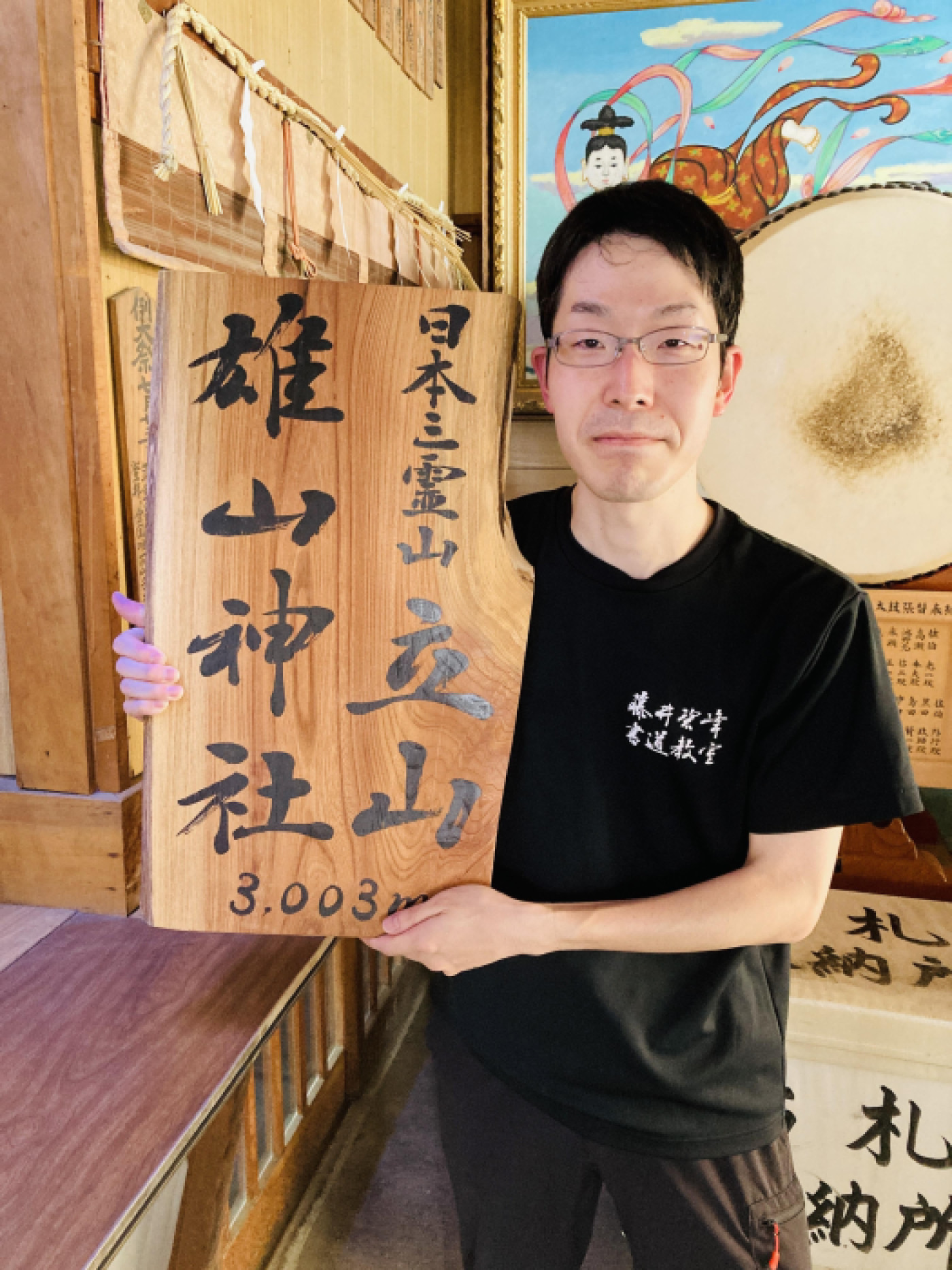
On his website, you can find the following:
- his past works showcasing his beautiful talent
- information about lessons and workshops he holds
- items for sale that you can purchase or custom order
And what comes across most on his website is his passion and talent for calligraphy along with his very diligent work ethic. It’s also evident through the immense praise and joy expressed in reviews from his clients.
※https://original-sho.com/
Yasuda Mai
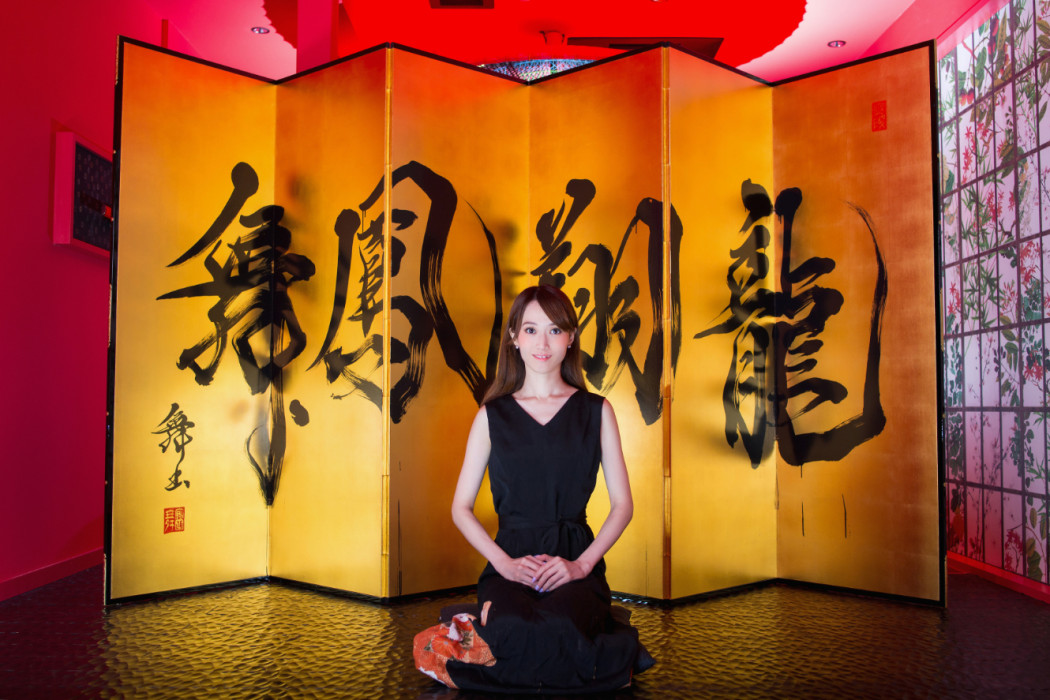
Yasuda Mai began doing calligraphy at age 4 and has won awards at a prefectural level. As a professional calligrapher, she has provided calligraphy for various corporations including in advertisements.
Just by looking at her website, you can see the wide range of work she has done in the past and continues to offer!
Not only does she offer custom designed calligraphy for clients, but she also does calligraphy performances! Events featuring her performances include PR events, reception parties, opening ceremonies, and even Japanese culture events overseas!
Seeing her dynamic and beautiful calligraphy as it’s written is breathtaking!
If you’d like updates about Mai’s work and events, you can sign up for her mailing list here. Make sure to check out her X (formerly Twitter) and Instagram accounts as well!
※ http://yasudamai.com/
The Fundamentals of Shodo
So you want to try out shodo? Then you have to master the basics!
Styles of Shodo
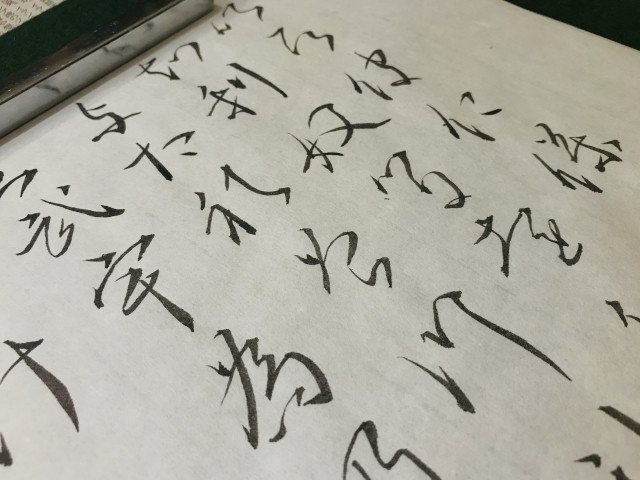
Kaisho
The very first style you’ll usually end up learning is 楷書 kaisho. The point of kaisho is that your characters are the most accurate they can be, with the correct strokes, stroke order, balance, etc. (More on strokes below.) People should be able to read what you wrote immediately. In school, students will practice the kaisho style, and their teacher will often correct them using red ink for strokes that were too short, too long, or were off balance.
Gyosho
After mastering Kaisho, you can then be a little more creative with 行書 gyosho. The motion of writing the characters is more fluid, which will reflect in the way the characters will naturally be more rounded and the strokes more connected with the next. You should still be able to read the characters, but it will definitely look more distinct and personal depending on the writer.
Sosho
Have you ever been to a museum and looked at ancient Japanese scrolls and script? The characters run into the next, the brush never leaving the paper until the next line, and you wonder how people ever read it. This style is called 草書 sosho and is often described as being Japanese cursive. It was first used to take notes quickly (think doctor’s handwriting), but is now considered an advanced form of calligraphy as you’re not being graded on if it can be read but the expression of emotions conveyed through the writing. This doesn’t necessarily just mean looking elegant, as some prefer to use very bold thick strokes to accent their work.
Strokes
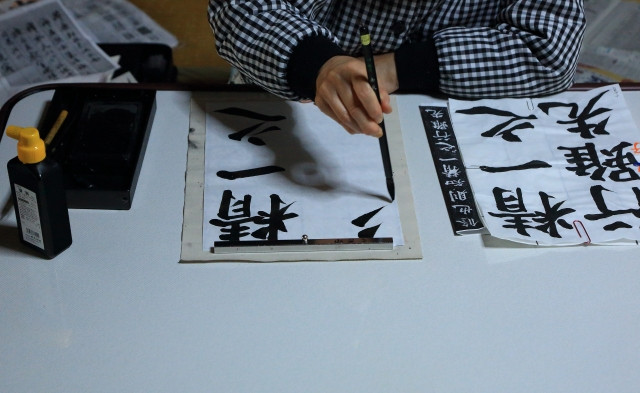
Japanese characters, kanji, are made up of 3 distinct strokes that are used when grading the strokes for accuracy. These describe how the end of the stroke looks when you lift your writing utensil:
-
止め tome - Ending with a firm full stop
-
跳ね hane - Ending with a small flick upwards
-
払い harai - Ending with the stroke curving slightly and thinning out compared to the start
The difference between these strokes are a little harder to tell when written with a pen or pencil (except for the obvious hane), but are incredibly distinct when written during shodo as the amount of ink used and brush technique is crucial to make the correct strokes. However, some people are critical about being too strict about these 3 strokes in particular since nowadays; the usage of the strokes sometimes varies between fonts of the same characters so it’s hard to say which one is the most “correct”.
For calligraphy in particular, there are eight basic strokes that are first needed when one starts to practice Japanese calligraphy. They are:
-
ten (dot),
-
yokoga (horizontal stroke),
-
tatega (vertical stroke),
-
hane (upflick)
-
migihane (rightward upflick),
-
hidaribarai (leftward downstroke),
-
hidarihane (leftward downflick), and
-
migibarai (rightward downstroke)
All 8 strokes are represented through the character 永 ei, or the kanji for eternal. So if you practice this kanji over and over, you should master the 8 basic strokes needed for calligraphy. (Tip: the barai in hidaribarai and migibarai means the harai stroke which we mentioned earlier in the 3 basic strokes.)
Brush Techniques
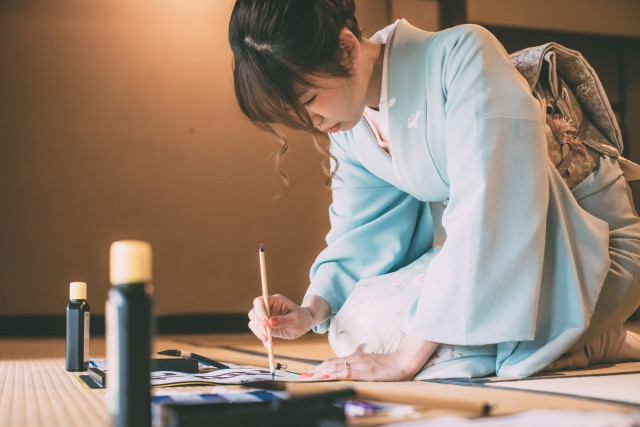
How you hold your brush is also important, as you can’t grip it like you would a pen or pencil. Your brush should be held straight and mainly with three fingers - your thumb, index and middle finger. Your middle finger can either be used to support the brush (three finger style), or it can be used to hold the brush whilst your ring finger is used as support.
What You Need for Shodo
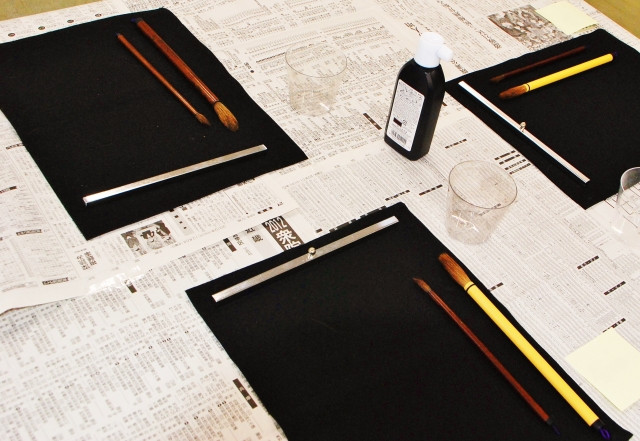
Okay! Are you ready to commit your brush strokes to paper? Here’s what you’ll need.
-
Ink (Sumi): There’s two states of ink - liquid and solid. You can get a solid ink block where you have to rub it in an inkstone with a little water to make the liquid ink yourself, or you can just get the ready-made liquid ink. The solid kind is said to be higher quality and keeps fresh longer.
-
Paper: When doing calligraphy, you can use any old paper but the best would be getting washi or mulberry paper. And with calligraphy style paper, you can choose the size appropriate for what you want to write instead of being confined by the usual paper sizes.
-
Brush: Calligraphy brushes are also by preference, but the more serious you get about calligraphy, the nicer the brushes you’ll want to end up using. Most people start out using the thinner brushes, called 細筆 hosofude, but as you get more creative or want to write on bigger pieces of paper, you might want to try out the 太筆 futofude, the thicker brushes.
Others (less important)

-
Inkstone (suzuri): This is essential only if you are using the solid ink type, as you’ll need a proper inkstone where you can make your ink. If you’re using liquid ink, you can use any kind of palette (although ink does stain so you may want to get a proper palette or inkstone just for calligraphy.)
-
Felt Mat: Most people use newspaper on top of the hard surface like the table or floor, but the felt mat provides extra support as well as extra stain prevention.
Also prepare lots of newspaper to cover the surface of where you’ll be writing your calligraphy and towels where you can wipe your brush and clean up any spills immediately.
Try Japanese Calligraphy

Here are some ways you can get started on Japanese calligraphy.
-
Self taught - You can get a cheap calligraphy set consisting of ink, paper and brush at the 100 yen shop. You can also pick up practice books where you can trace letters, or you can always watch YouTube videos where each character is explained stroke by stroke.
-
Workshops - Schools including universities and Japanese language schools often offer calligraphy workshops, classes and electives for students. Your local community center might offer workshops for free as well, so keep an eye out for flyers.
-
Classes - And if you’re really serious about it and want to get the perfect start, take classes taught by a professional. Not only will you learn about the correct strokes and form, but you’ll also learn the mindset behind shodo as well.
Summary
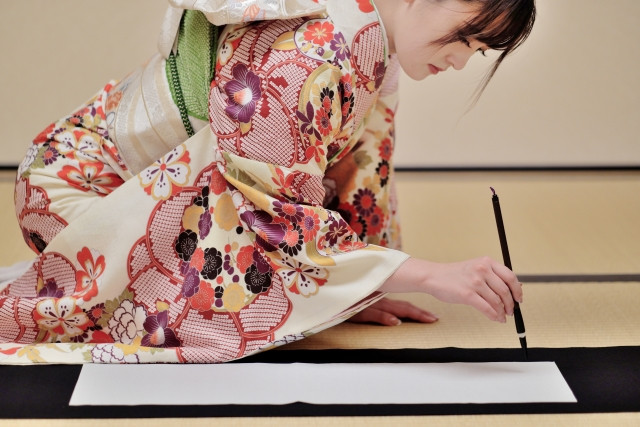
We hope this article provided a good look at Japanese calligraphy and what has made it so beloved and practiced for centuries. And we hope it encourages you to try it out yourself!


































